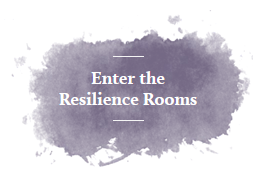Important life lessons we can utilize each and every day.
Wouldn’t it be nice if making decisions were as easy as deciding what flavor of ice cream we wanted to eat? Most decisions that we make are not black and white and leave us with strong, powerful, and at times uncomfortable emotions.
We are all at one point or another faced with making important decisions. As a working mother, I am constantly making decisions that leave me with deeply negative and often disappointed and regretful feelings.
The hardest decision that I ever remember making was the decision to break off my engagement to a person I was deeply in love with and dated for six years. My heart was pulling me in many different directions and all my thoughts were rational and could be rationalized. I was left with wondering why I wanted to break off a relationship with someone I loved, cared about, and wanted to be with.
Conflicting Core Values
My core values of family, loyalty, love, compassion, security, and reliability were directly in opposition with my other core values surrounding self-preservation, personal growth, self-respect, responsibility, ambition, and education. I expected that to make the “right” decision I needed to feel fully confident in the position I was choosing to take and that all my feelings needed to be aligned with that position. I learned that making the decision was not contingent upon whether I was feeling “okay” with it.
I had the responsibility to fully evaluate my alternative choices and thoughtfully decide that under my set of circumstances, I was making the best decision for me and which would inevitably allow me to be my best self. I had no choice but to confront the array of lingering feelings that were naturally associated with loss and transition. It was pain that I was fully expecting and chose to take on, for the betterment of my future and who I was choosing to evolve into.
Why It’s Challenging to Make Decisions
Decision making requires us to take risk and give up a degree of control because of the uncertainty. There is usually a tradeoff that we must accept for making the decision we choose. We tend to be fearful of making a poor decision and it being deemed or reinforced that we failed and are therefore a failure. We also worry about the potential rippling effects that we think we may not be able to reconcile. There is good reason for our concern and discomfort.
Challenging decisions generally come up because there are two core values underlining the decisions that are in opposition with one another. The responsibility lies in our identifying values, effectively problem solving and balancing out the emotional and intellectual variables.
When Challenging Decision Making Comes Up, Consider:
(1) That rather than thinking about it dichotomously or as a right or wrong decision, consider what the “best” decision is under the circumstances. Thinking about it in absolutes evokes fear and anxiety. Most people experience decision making as dreaded because they fear the “devastating” consequences attached to a “wrong”, “failed” and “bad” decision. This could also lead to prolonged decision making. All decisions have a redeeming value and could be an impetus for learning, growing, and reconsideration. Few if any decision lead to dire consequences even though our mind tells us to believe it is so.
(2) Break down the decision by the core values that are operating for you so that you can see why that position is so meaningful to you. You can use this while helping someone else to work through a challenge or as a parent you can use this with your children to teach them to effectively problem solve and identify the values that will drive their behaviors. This is a valuable lesson to learn in our early development.
(3) There is pain and discomfort in values and values in pain and discomfort. Your values are your guiding principles and represent who you are and what is meaningful to you. They guide your actions. There are deep emotions attached to these values and when you feel that they are being compromised you are bound to feel uncomfortable.
Ask yourself, would you truly want to be “okay” when these get challenged (e.g., if you see someone cutting a line that you have been waiting on, you become enraged because it rubs against your value of fairness and justice, of course you wouldn’t want to be okay with their unjust behavior, but you also have the choice whether to physically accost the person because of their behavior or assertively and respectfully ask them to move to the end of the line).
(4) Thoughtfully problem solve and balance out both the emotional and intellectual variables. Some of us are more emotionally driven and some of us more intellectually driven. Intentionally and proactively lean in the direction you tend to be less drawn to.
(5) Make attempts to expand the way you look at things and ask yourself, “What else can I consider?” or “Is there anything else here that I’m not fully considering?” We sometimes get stuck on our own values and principles without considering those of others. We need to be willing to be more open and expansive.
(6) In order to fully process your decision and problem solve, consider trying this exercise. Draw a square with four quadrants. List what the advantages and disadvantages are for each of the quadrants. Go quadrant by quadrant starting from left to right first concentrating on the top and then make your way to the bottom. After all four are complete, stipulate on a scale from 1-5 how important each item on each quadrant is for you.
Add up the numbers on the diagonal quadrants (e.g., advantages of changing jobs and disadvantages of changing jobs versus advantages of not changing jobs and disadvantages of not changing jobs). Compare the two sets of numbers and discuss which was greater. If the numbers are close think about why you are so split. For both positions, contemplate whether values would be able to be maintained if you remained in that situation. Also, go back to considering which values are more prominent in this circumstance and what decision will allow you to be your best self.
Traditional problem-solving methods include defining the decision, analyzing it, developing alternatives, selecting the best solution, implementing the solution, analyzing the results, and learning from them. With identifying your core values and processing and problem solving them, you can make the “best” decisions, but it may not be free of emotional discomfort. Making decisions can be challenging without the residual struggle and dread attached to it.
We will all continue to be put in situations where we must make challenging and important decisions. We should choose to approach it mindfully and meaningfully. Celebrate it as an opportunity to learn, grow, and evolve into the person we aspire to become.
Here is a Mantra Guided Meditation led by me. Please subscribe to my YouTube channel for more talks and guided meditations.
Blog as published in Psychology Today.



